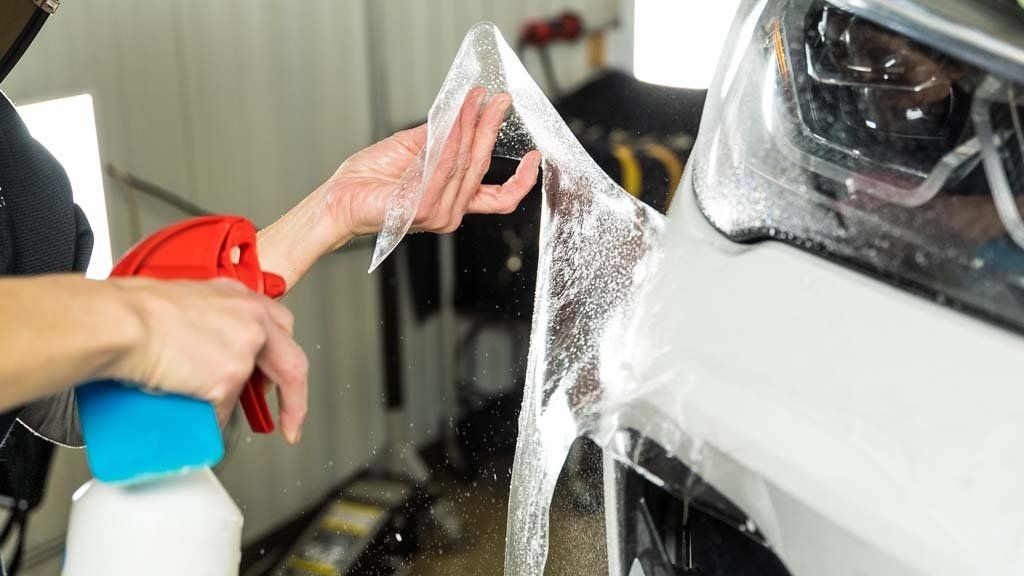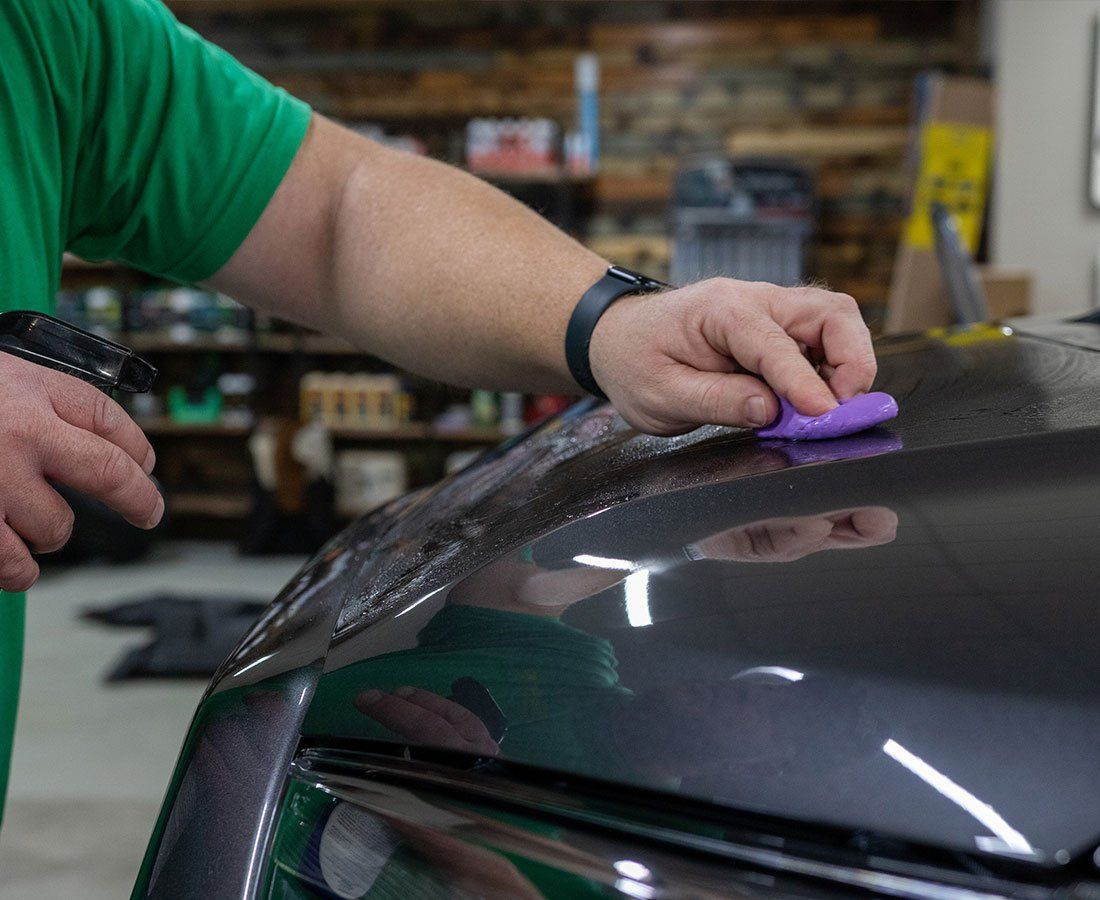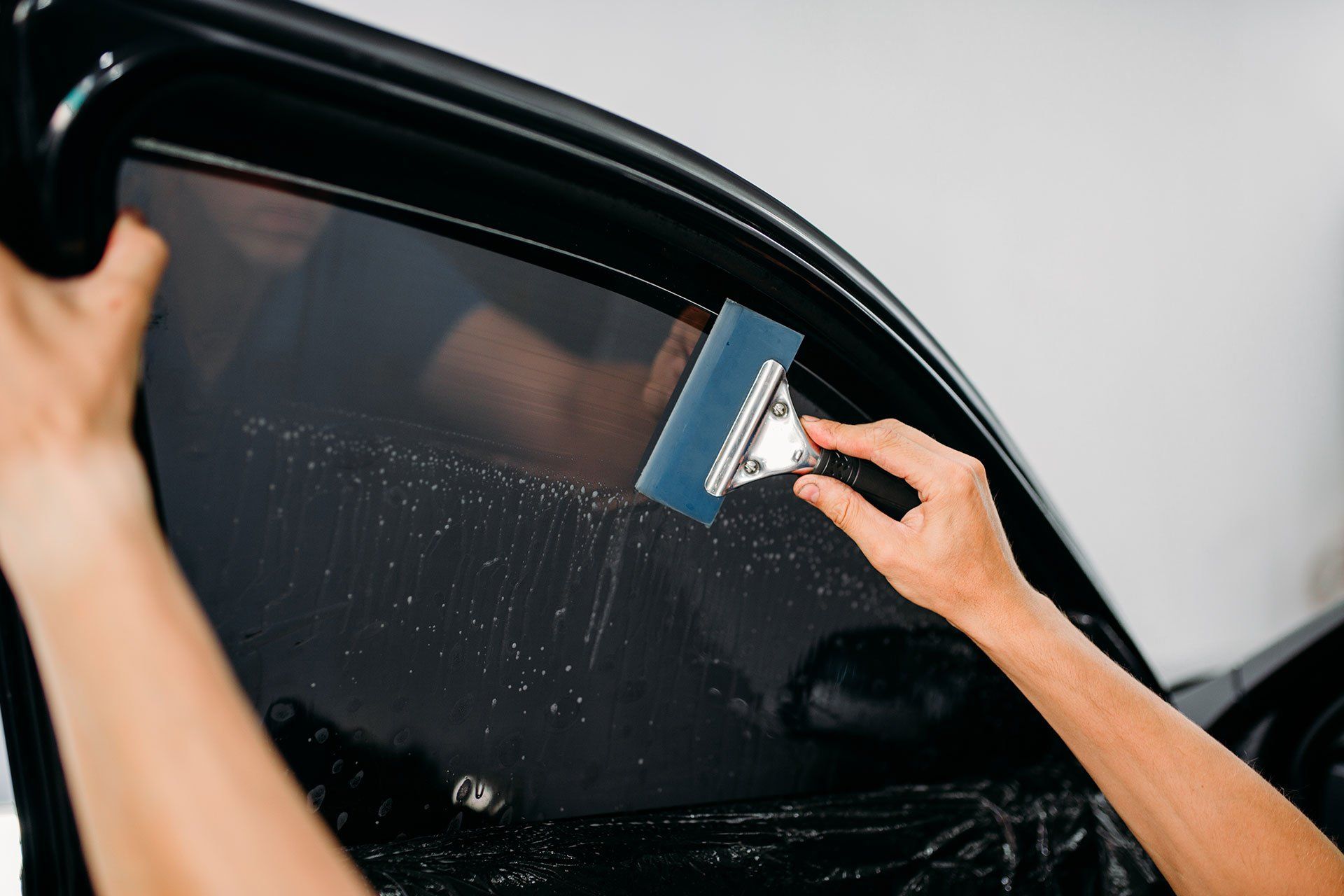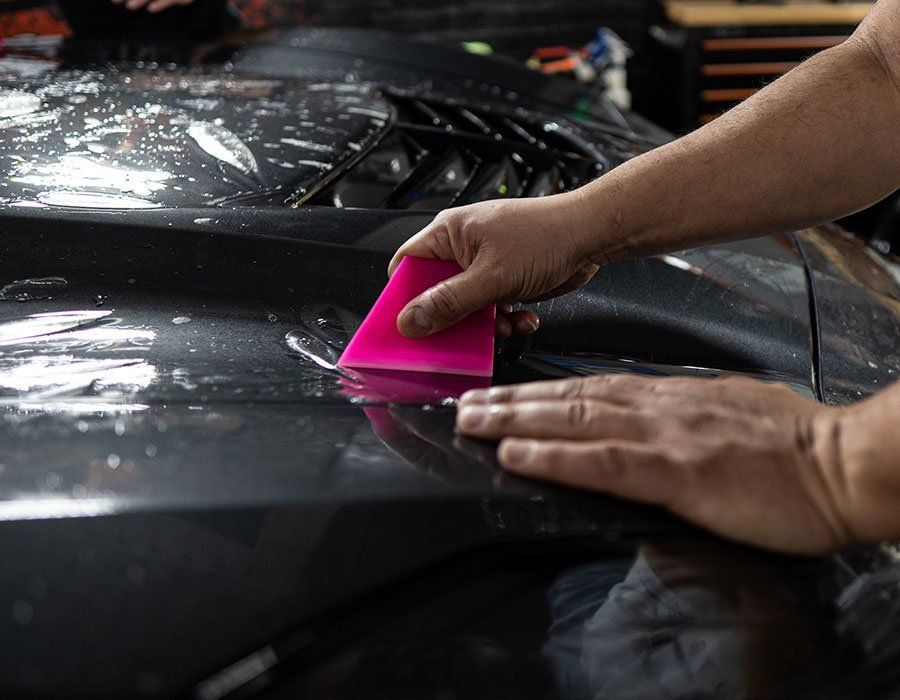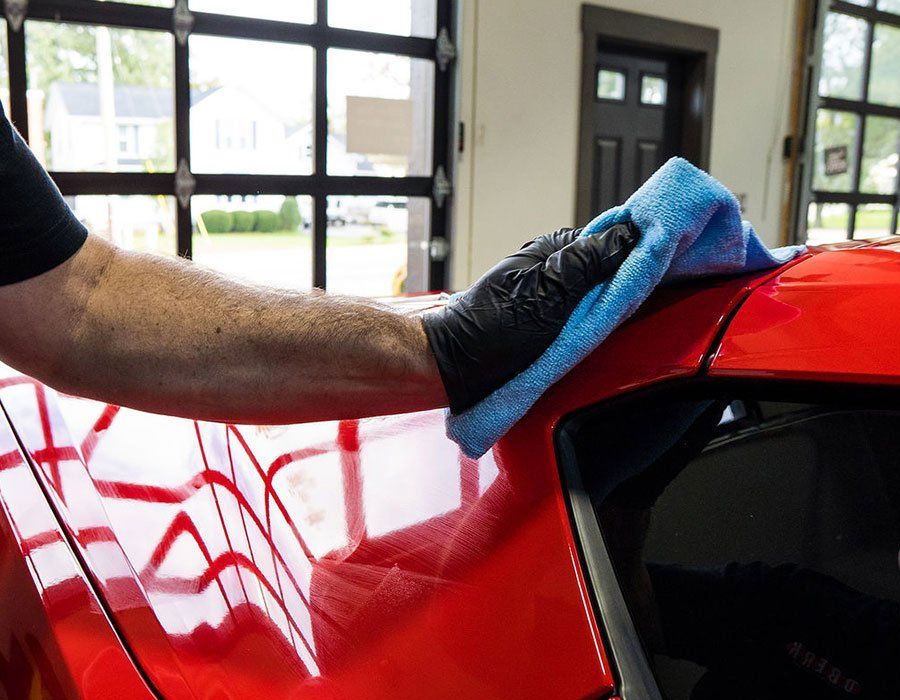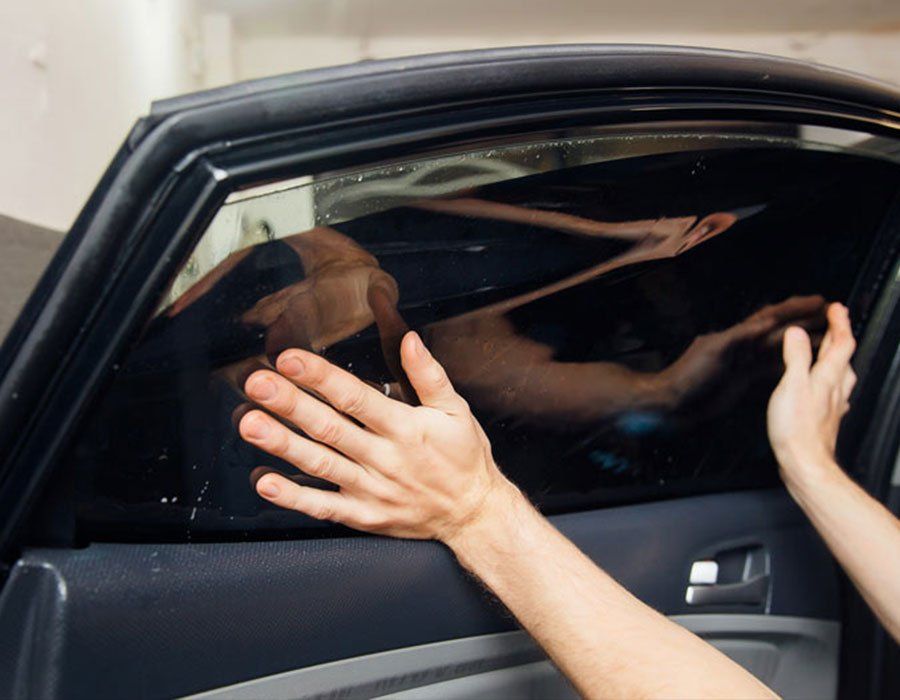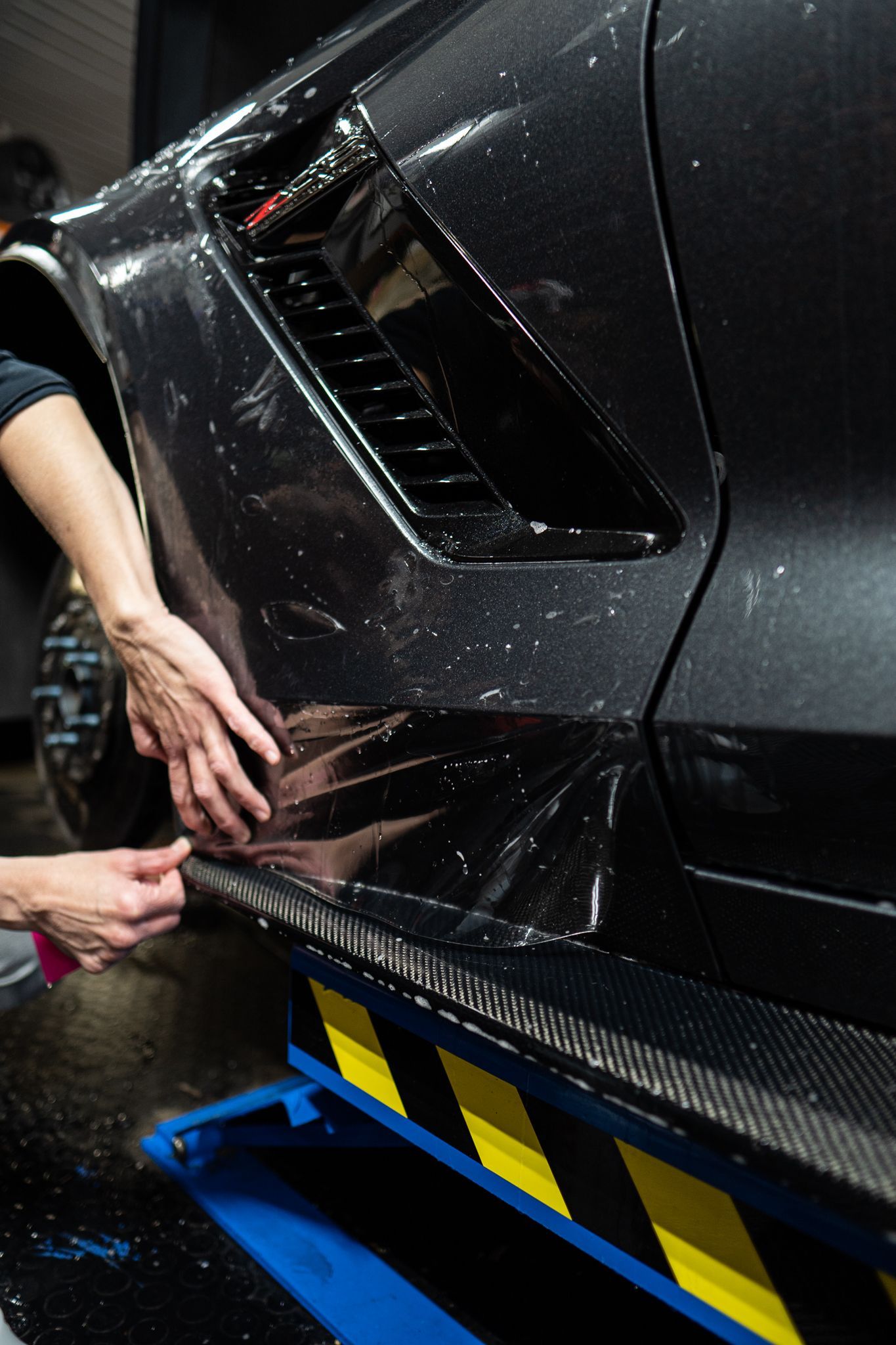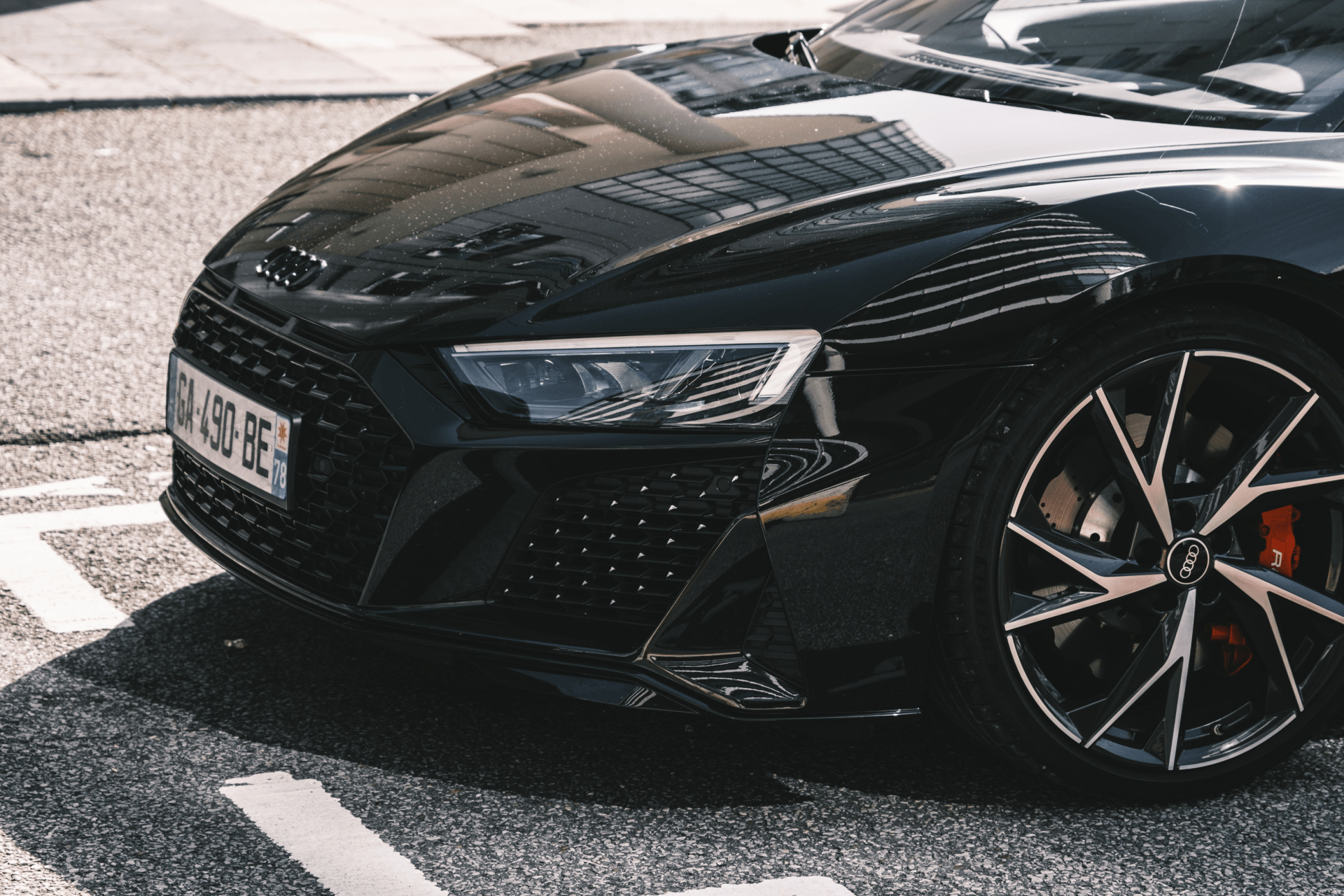Protect Your Vehicle's Paint with PPF: How to Shield Against Bird Droppings
CALL (727) 940-2340
SCHEDULE NOWPPF, short for Paint Protection Film, works as an effective guard for your vehicle's bodywork against bird droppings. Acting as an absorbent barrier, it stops these droppings, particularly acidic in nature, from coming into direct contact with your car's paint, thereby preventing potential damage. But PPF doesn't just limit itself to battling bird droppings. It also protects your car from common harm like scratches, scuffs and stone chips, offering broader protection than one may initially realize. Let's delve deeper into this protective film.
Paint Protection Film (PPF) acts as a robust barrier, shielding your vehicle's paint from corrosive substances like bird droppings and preventing etching and damage. By investing in PPF, car owners can effectively guard against the harmful effects of bird droppings on their vehicle's paint, thus preserving its pristine condition for longer durations.
What is PPF and How Does It Protect Your Vehicle?
Paint Protection Film, or PPF for short, acts like a suit of armor for your car—`a nearly invisible layer that shields the paint from all kinds of harm. It's akin to the force field in those sci-fi movies—except it's real! This transparent film is carefully applied to the exterior of your vehicle to act as a protective barrier against a wide range of potential damage, including those pesky bird droppings.
Here's where things get really cool: when bird droppings land on a car with PPF, the film absorbs the impact, stopping it from reaching your precious paint. You can think of it as a superhero swooping in at the last second to take the hit instead of your paint. By absorbing the impact, PPF prevents bird droppings from directly etching into the car's paint, safeguarding your vehicle’s appearance and value.
Imagine you're eating at a restaurant and someone spills a drink. Instead of it seeping onto your clothes, you’re wearing an invisible shield that takes the stain away instead. That’s what PPF does for your car! But it’s not just about protection from bird droppings; PPF guards against an array of threats such as stone chips, scratches, and environmental damage too. It’s like giving your car its own superpower.
If you care about keeping your car looking pristine and new, understanding how PPF protects your vehicle is crucial. Visit our website for detailed guides on the application and benefits of PPF so that you can make an informed decision regarding the protection of your beloved vehicle.
Advantages of PPF Against Bird Droppings
Bird droppings are not only unsightly but also damaging to your vehicle's paint. They contain acidic substances that can eat away at the paint and clear coat if left untreated, leading to a condition known as "paint etching." However, this is where PPF steps in as a protective barrier against such corrosive elements.
When bird droppings land on your vehicle, it's like a small acid attack on the paint. If not promptly cleaned off, the acidic nature of the droppings can react with the clear coat and paint layers, leading to unwanted damage. This is where PPF shines; it acts as a sacrificial layer that takes the hit instead of your pristine paint job. By preventing direct contact between the corrosive substances and the actual painted surface, PPF significantly reduces the risk of paint etching. The effectiveness of PPF lies in its durable and resilient nature, offering a shield that can withstand the corrosive impact of bird droppings. It adds an extra layer of protection that helps to maintain the glossy finish of your vehicle without compromising on its visual appeal.
Think of it as a superhero cape for your car that will swoop in to prevent potential damage from bird droppings. The sacrificial nature of PPF ensures that any acidic substances are intercepted before they can wreak havoc on your vehicle's beautiful exterior.
Furthermore, the preventative nature of PPF extends beyond just protecting against immediate harm. It also safeguards your investment in the long run by preserving the integrity and value of your vehicle. PPF doesn't just protect—it preserves.
Consider it an insurance policy for your car's paint job. Even though you might not frequently come into contact with bird droppings, having PPF protection gives you peace of mind and ultimately improves your driving experience. In essence, understanding the advantage of PPF against bird droppings underscores its role as a reliable safeguard for maintaining your vehicle's impeccable appearance and protecting it from potential damage.
Additional Benefits of PPF
In addition to shielding your vehicle's paint from the acidic perils of bird droppings, PPF serves as a robust defense system against various hazards encountered on the road. Stone chips, a common concern, can occur when debris or gravel kicked up by vehicles ahead makes contact with the front of your car, resulting in unsightly marks and chipped paint if left unprotected.
Moreover, bug splatter may not seem alarming at first, but these seemingly harmless splats can become increasingly stubborn to remove over time. Their acidic composition can accelerate paint etching similarly to bird droppings if left unattended. By applying PPF, you create a barrier that mitigates this issue and makes cleaning off bug remnants a breeze, saving time and preserving your vehicle's pristine finish.
Minor abrasions are another regular occurrence for vehicles that can be easily prevented with PPF. These minor bumps and scrapes can add up over time, leaving behind surface imperfections that detract from the visual appeal of your vehicle. PPF acts as a shield, absorbing the impact from such incidents and safeguarding your car's exterior.
To put this into perspective, think of PPF as the ultimate bodyguard for your vehicle's pristine appearance. Just like a bodyguard shields their charge from potential harm, PPF provides an invisible yet impenetrable layer that thwarts threats before they even reach your car's surface. In essence, while protecting against bird droppings is important, PPF offers a complete shield against an array of potential harms. From airborne debris to pesky insects and accidental scratches, PPF provides an all-encompassing defense to uphold the immaculate appearance of your vehicle.
Applying PPF on Your Vehicle
Applying Paint Protection Film (PPF) isn't just about slapping a layer on your car and calling it a day. It involves a methodical approach to ensure that the film effectively shields your vehicle's paint from potential damage. Surface preparation is crucial in this process, as any dirt or imperfections can affect the film's adhesion and the clarity of the final result.
Professionals typically begin by thoroughly cleaning the surface, removing any contaminants or residues that may interfere with the adhesion of the film. This ensures that the PPF can bond properly with the vehicle's paint, preventing any issues down the line. Once the surface is immaculate, precise cutting of the film is necessary to ensure a custom fit for each section of the car. This requires expertise to avoid overlapping or leaving exposed areas that could defeat the purpose of protection.
Imagine the process of carefully applying a screen protector to your smartphone. If there are any particles or air bubbles underneath, it can compromise the functionality and aesthetics of the screen. Similarly, imperfections during PPF installation can impact its performance and longevity. This illustrates why seeking professional installation is highly recommended—it ensures that every step is executed with precision, delivering a seamless protective layer for your vehicle's paint.
Auto Film Guys offers comprehensive insights into the application process, shedding light on what users should anticipate during installation. From surface preparation to custom fitting, we provide valuable guidance to prepare individuals for what goes into this meticulous process.
While some may consider DIY installation, it's important to recognize the expertise and experience that professionals bring to the table. They have honed their skills through countless installations and possess a keen understanding of various vehicle surfaces and contours. Their proficiency in handling PPF minimizes the risk of imperfections and guarantees a smooth, flawless finish.
In summary, the application of PPF demands precision and expertise at every stage—from surface preparation to accurate installation. Seeking professional assistance not only ensures a seamless outcome but also maximizes the protective benefits of PPF for your vehicle's paint.
Choosing the Right PPF Product
When it comes to safeguarding your vehicle's paint, not all paint protection films (PPF) are created equal. Finding the right PPF product means considering a variety of critical factors that will impact its performance and longevity, ensuring your car stays sleek and new for years to come.
Clarity, self-healing capabilities, and durability against environmental elements are key factors to consider when selecting a PPF product.
- Clarity: Opt for a film that provides high optical clarity, just like picking out a clear glass marble over a scratched one. You want the film to be as see-through as possible so it doesn't interfere with the appearance of your vehicle. While some PPF products may have a slight tint for additional UV protection, it might not be ideal if you prefer your vehicle's color to remain untouched.
- Self-Healing: Look for films that have self-healing properties, meaning they can repair minor scratches on their own over time with heat from the sun or warm water. This feature can keep your car looking fresh and well-maintained without requiring frequent trips to the body shop for touch-ups.
- Durability against Environmental Elements: Your car faces all sorts of environmental challenges daily—UV rays, bird droppings, road debris, and more. The right PPF product should stand strong against these elements, providing a reliable shield for your vehicle's paint. This strength ensures that your car remains protected even in harsh weather conditions or frequent exposure to sunlight.
Armed with these insights, you can make an informed decision when choosing a PPF product that aligns with your specific needs. Remember, investing in a high-quality PPF product will provide long-term protection for your vehicle, ensuring that it maintains its pristine appearance for years to come.
Cost of PPF: Is It Worth Your Money?
When it comes to protecting your vehicle's paint, Paint Protection Film (PPF) presents a strong case. Naturally, one of the first questions that comes to mind is whether it's worth the financial investment. The cost of PPF installation can vary quite a bit depending on several factors, such as the size of the vehicle, the quality of the film, and the installation location.
In 2024, the factors influencing PPF coating prices are quality and brand, the size of the vehicle, complexity of installation, and location. Higher-quality PPF films with advanced features like self-healing properties and enhanced durability generally come with a higher price tag. Established brands may charge a premium for their expertise and reputation in the market.
Size Matters
The size of the vehicle being coated affects the overall cost, as larger vehicles require more material and labor. For instance, covering an SUV with PPF will cost more compared to a small sedan due to the larger surface area.
Complexity and Location
The complexity of the installation is also an influential factor. Vehicles with intricate body designs or curves may require additional time and skill, impacting the cost of installation. Moreover, prices for PPF coatings may vary across different regions due to differences in the cost of living and business overhead expenses.
Just like getting a custom-made suit, intricate designs require more time and effort, which can affect the bottom line. For example, a luxury vehicle with a complex body design might command a higher price for PPF installation compared to a regular sedan.
Now, while the initial investment for quality PPF installation may seem significant, it's essential to consider the long-term benefits it provides. Investing in PPF coatings can provide long-term benefits by preserving the appearance and value of vehicles.
Over time, vehicles are subjected to various external elements, such as road debris, UV rays, bird droppings, tree sap, and rock chips, which can damage the paint. PPF acts as a shield, absorbing impacts and preventing scratches and swirl marks on your vehicle's paintwork.
Moreover, PPF can significantly contribute to maintaining your vehicle's resale value by safeguarding its exterior against wear and tear. This means that when you eventually decide to sell your car, having PPF installed may pay off in terms of attracting potential buyers who value well-preserved paintwork.
Considering all these aspects together, from protection against external elements to potential preservation of resale value, it's evident that while there is an upfront cost associated with PPF installation, its long-term value proposition makes it a compelling choice for many car owners seeking to maintain their vehicles in top condition. The comprehensive protection and potential resale value enhancement make PPF installation a worthy consideration for those looking to keep their vehicles in pristine condition in the long run.
Auto Film Guys: Pinnacle PPF Installers in Tampa, FL
Looking to shield your vehicle from the daily wear and tear of Tampa's roads? Look no further than Auto Film Guys, your premier destination for top-notch Paint Protection Film (PPF) installation in Tampa, FL. Our team of skilled professionals specializes in applying Pinnacle PPF, providing unrivaled protection against rock chips, scratches, and other road hazards. With our meticulous attention to detail and commitment to quality, you can trust that your vehicle will receive the ultimate defense against whatever the road throws its way. Don't wait until it's too late; safeguard your investment and preserve your car's pristine appearance with Pinnacle PPF from Auto Film Guys. Contact us today to schedule your installation and experience peace of mind on the road ahead.
The Auto Film Guys Blog
